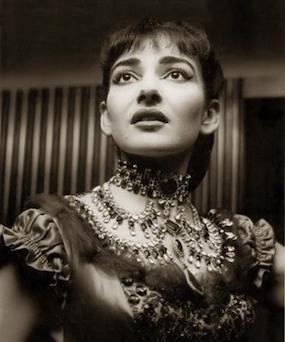We all know a touching and sad tale of the Snow Maiden, the authors of which were A.N. Ostrovsky and N.A. Rimsky-Korsakov. The party of the tender girl, the daughter of Spring-Red and Frost, according to the author’s intention, is performed by a coloratura soprano. It was such a timbre of voice, high and resembling a crystal bell, that was able to convey both the ringing of a drop and the silver of ice, which is associated with the image of the Snow Maiden.
Coloratura soprano in the classification of singing voices takes the highest line. This is a voice that can sound in the uppercase. In addition, this is the most moving voice, which is why it is called coloratura. He is able to perform the most complex vocal jewelry - coloratura.

It is interesting that different composers were differently attracted by the possibilities of this timbre. If composers of the 18th century paid attention to the virtuosity of the sound of the voice, then the coloratura soprano was used to show its closeness to the sound of a musical instrument in all its splendor. An example is the evil sorceress Queen of the Night, whom V. Mozart assigned one of the main roles in the opera The Magic Flute. Bright and complex party with virtuosic passages. Later, already in the 19th century, composers began to pay more attention to expressiveness, the psychology of singing. But still this timbre of a female voice is associated with fairy-tale heroines: Lyudmila in the opera Ruslan and Lyudmila by M. Glinka, Tsarevna-Lebed in The Tale of Tsar Saltan by N. Rimsky-Korsakov, Shamakhanskaya Tsaritsa in his Golden Cockerel.
In the west, a narrower specialization has formed. Coloratura soprano is divided into dramatic soprano and lyrical. The Queen of the Night in the Mozartian “Magic Flute” is sung by a performer with dramatic voice characteristics, and the part of Zerbinetta in “Ariadne on the Naxos” by Richard Strauss is performed by the lyric-coloro soprano. In Russian practice, such fragmentation, as a rule, is not taken into account.
Singers with lyrical sopranos perform the parts of Natasha Rostova in War and Peace by S. Prokofiev or Tatyana in the opera Eugene Onegin by P. Tchaikovsky. This is a voice with a warm timbre, lyrical and soft.
Another variety - the dramatic soprano, as the name implies, is a bright and strong singing voice. Such a timbre is given to parties of complex heroines who fight for their happiness and often die for it. Natasha from A. Dargomyzhsky’s opera “The Mermaid” or Lisa from “The Queen of Spades” P. Tchaikovsky are just such heroines.
There are voices that can combine the various qualities of a soprano, then they can do the most diverse parties and images. Such a unique lyric-coloratura soprano was, for example, the great Russian singer Antonina Nezhdanova.
Of course, for the right of the first soprano of the world, Italian singers singing Belcanto always always fought first. Once upon a time, Maria Callas was the first . Today the throne is free. Although the Russian singer Anna Netrebko, who are pleased to see on any stage, confidently presses on Western opera divas, being at the same time a prima of the Mariinsky Theater.